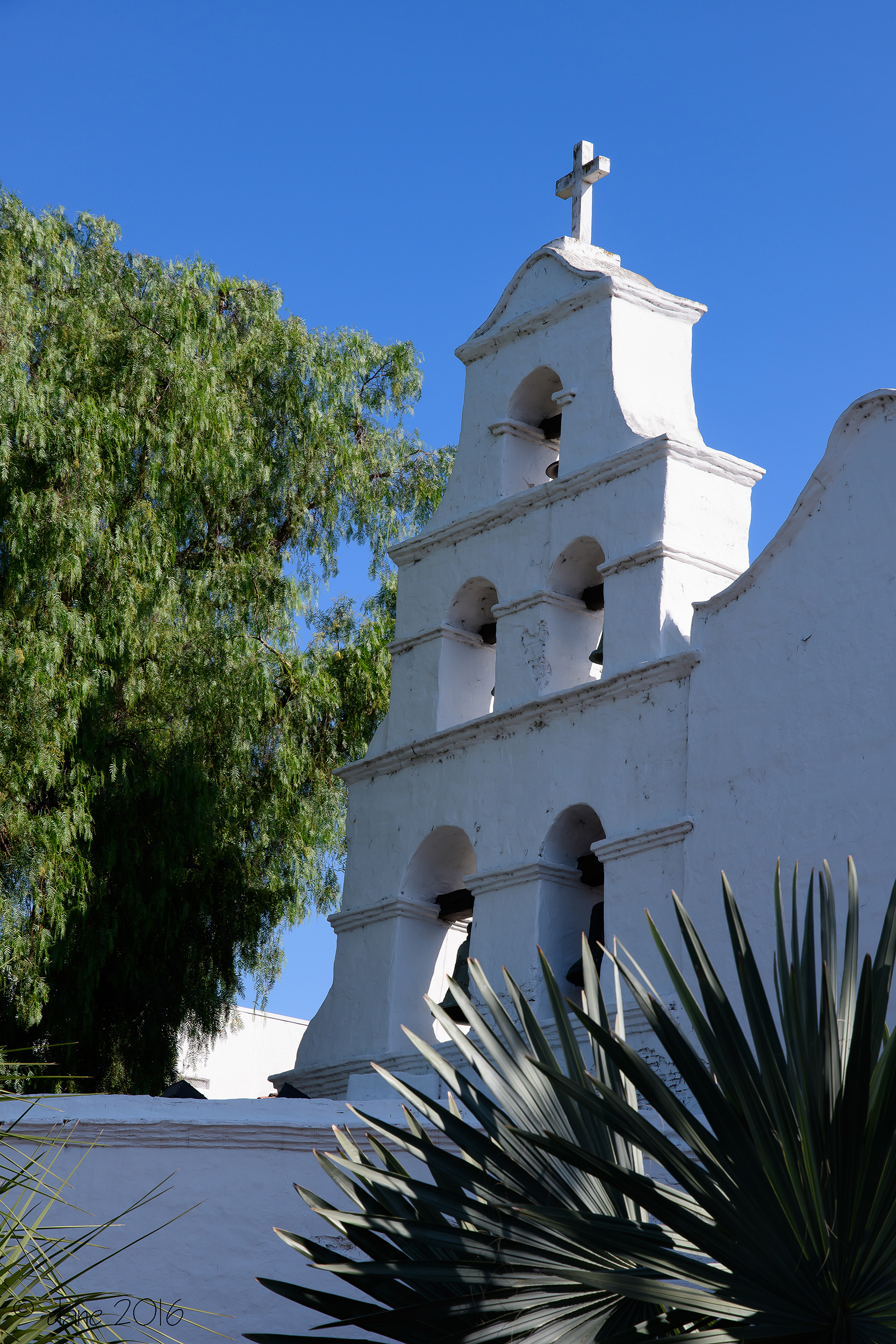

















Your Custom Text Here
On July 16, 1769 Fr. Junipero Serra raised the cross, said Mass at the site chosen for the chapel and formally founded Mission San Diego de Alcalá on a hill overlooking the bay. It was the first of twenty one missions that would eventually be established in the Spanish empire of Alta California. The original settlement consisted of very primitive brush covered huts. Resistance from the local Tipai people began almost immediately, leaving a number of dead on both sides just weeks after the mission was established.
In 1774, the mission was relocated to its present location about six miles northeast of the original site. By 1808 the population reached fifteen hundred and the construction of a new, larger church – the third one on the present site – was begun. In 1811 cracks in the church roof developed and the two buttresses at the front entrance were added to provide additional structural support. The church was completed around 1813.
From 1777 through the early years of the 1820’s, the mission grew but was never considered among the most prosperous of the California missions. It was quickly abandoned during the secularization of the missions by Mexico, and by 1836 the church and other mission buildings had begun to deteriorate, the adobe walls melting back into the earth. The arrival of Americans following California statehood only accelerated the neglect of the mission – distained as a foreign relic of a bygone culture. From 1849 to 1857, the American military used the old church as a barracks and stable. When they left, time and the elements began their grim work on what remained of the church and mission buildings. By the late 19th century, all that remained of the church was its façade, the two buttresses, the base of the bell tower, the baptistery arch, and one room of the convento (the priest's residence).
The turn of the century brought a revival of interest in the history of the missions and early Spanish culture of Alta California. Serious restoration of Mission San Diego started in the 1920’s. Restoration of the church in 1931 followed contemporary standards of historical accuracy and, whenever possible, used materials identical or similar to the original structure of 1813. Although it’s mostly a reconstruction, today’s church, both exterior and interior, represents as close as possible the dimensions and appearance of the original 1813 building.
On July 16, 1769 Fr. Junipero Serra raised the cross, said Mass at the site chosen for the chapel and formally founded Mission San Diego de Alcalá on a hill overlooking the bay. It was the first of twenty one missions that would eventually be established in the Spanish empire of Alta California. The original settlement consisted of very primitive brush covered huts. Resistance from the local Tipai people began almost immediately, leaving a number of dead on both sides just weeks after the mission was established.
In 1774, the mission was relocated to its present location about six miles northeast of the original site. By 1808 the population reached fifteen hundred and the construction of a new, larger church – the third one on the present site – was begun. In 1811 cracks in the church roof developed and the two buttresses at the front entrance were added to provide additional structural support. The church was completed around 1813.
From 1777 through the early years of the 1820’s, the mission grew but was never considered among the most prosperous of the California missions. It was quickly abandoned during the secularization of the missions by Mexico, and by 1836 the church and other mission buildings had begun to deteriorate, the adobe walls melting back into the earth. The arrival of Americans following California statehood only accelerated the neglect of the mission – distained as a foreign relic of a bygone culture. From 1849 to 1857, the American military used the old church as a barracks and stable. When they left, time and the elements began their grim work on what remained of the church and mission buildings. By the late 19th century, all that remained of the church was its façade, the two buttresses, the base of the bell tower, the baptistery arch, and one room of the convento (the priest's residence).
The turn of the century brought a revival of interest in the history of the missions and early Spanish culture of Alta California. Serious restoration of Mission San Diego started in the 1920’s. Restoration of the church in 1931 followed contemporary standards of historical accuracy and, whenever possible, used materials identical or similar to the original structure of 1813. Although it’s mostly a reconstruction, today’s church, both exterior and interior, represents as close as possible the dimensions and appearance of the original 1813 building.
South facing front entrance and bell wall. Facade restoration of 1931 - 1936.
Front entrance doors with their original wooden lintels
Nave
Sanctuary lamp signifying the presence of Christ in the Tabernacle
Chancel and altar
The baptistry, one of the few remaining original parts of the 1813 church.
Reconstruction of priest quarters as it might have appeared in the early 19th century.
Mission gardens and bell tower north facing wall.